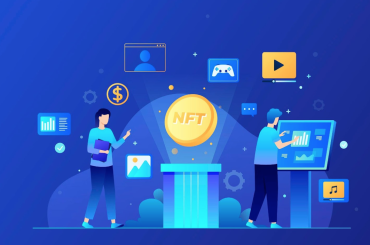The third most expensive art sold by a living artist is an NFT art by Beeple, whose real world identity is Mike Winkelman, entitled “Everydays – The First 5000 Days” auctioned off at Christie’s for a whopping $69.3 million.
Composed of 5,000 images painted each day by Winkelman for 13 years, Everydays is the first digital art sold by Christie’s and also the most expensive NFT art sold to date. Before Everydays was sold, Winkelman was just a regular American digital artist who sold $100 art pieces. Now, he is not only the third most valuable living artist, but he has established himself as a true artist that collectors watch out for. It can be said that Winkelman is set for life.
And as famous celebrities like Paris Hilton, Snoop Dogg, Ashton Kutcher and Stephen Curry join the NFT craze, NFT art has become something that investors and collectors are becoming increasingly interested in. In the same way, rookie artists are being given the opportunity to present their works of art to a global audience.
With the chance to earn big and make a name for oneself, it is not a wonder why people are jumping on the bandwagon that is NFT art. But what is it exactly and how does one create and sell an NFT art?
NFT stands for non-fungible token—it is not a cryptocurrency nor is it a conventional token. It is a type of digital asset that is representative of real-world objects, such as art, video, music and property.
Non-fungible literally means non-interchangeable, and that is the essence of an NFT. Unlike digital currencies and other tokens that can be mutually substituted with similar items, an NFT is unique and it cannot be exchanged for something different.
An NFT is also indivisible, unlike digital currencies that can be broken down into smaller units. NFTs epitomize ownership. For instance, only Winkelman could make an NFT art of Everydays and sell it because he was the one who created it. NFT provides authenticity, and only the true owner of the NFT art can sell it.
This is because, like cryptocurrencies, NFTs also live on the blockchain. The process of minting is how a digital asset is turned into an NFT, and this is also why NFTs are immutable. This means that once someone creates an NFT, its ownership cannot be changed unless it is rightfully sold.
In order to create an NFT art, one has to look for a platform that mints NFTs, such as the ETH and BSV blockchains. This is not free, and the minting fees also depend on the blockchain one is putting it on.
Next, one has to create an account at a non-custodial digital wallet and put money in it. The wallet then has to be linked to the minting platform in order to pay the minting fees. After which, the digital art can then be uploaded, together with a description. Once this is done, the NFT art is ready to be sold at an auction.
Creating NFT art is easy and has the possibility of yielding high returns, and this is what makes it especially attractive to artists. Guaranteed immutability and authenticity are what makes collectors flock to it.




